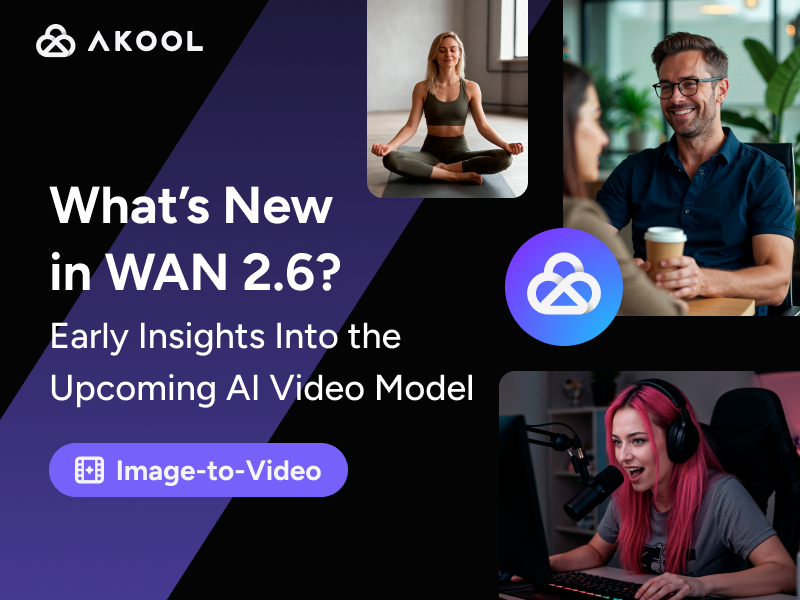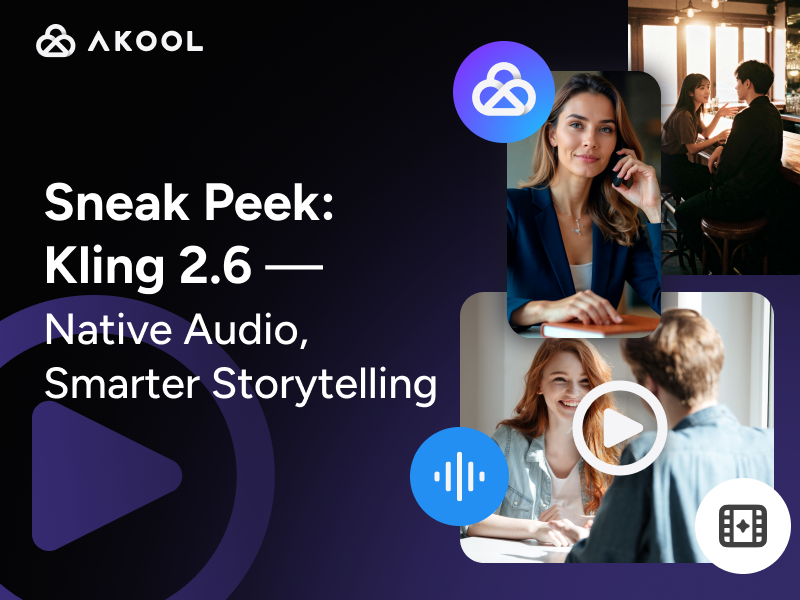Introduction to AI for Employee Engagement
AI for employee engagement leverages artificial intelligence to understand and enhance workplace satisfaction. By analyzing data points such as feedback, productivity metrics, and sentiment analysis, AI provides insights into employee morale. Useful formulas include predictive analytics to foresee engagement trends. Capabilities extend to personalized growth plans and real-time interaction feedback, empowering creative agencies to foster a more motivated and productive workforce.
To learn more about using AI in similar domains, explore AI in Human Resources and AI for HR.
How to Use AI for Employee Engagement
Integrating AI into your employee engagement strategy can significantly enhance how creative agencies manage and motivate their teams. Here’s a streamlined guide to implementing AI for employee engagement:
Define Core Objectives
- Clarify Goals: Determine what aspects of employee engagement you aim to improve—such as morale, productivity, or retention.
Select Appropriate AI Tools
- Sentiment Analysis: Choose tools that analyze communication patterns to understand employee emotions and morale.
- Feedback Automation: Implement AI platforms that automate surveys and analyze feedback for actionable insights.
Implement AI Solutions
- Data Integration: Ensure AI systems can access necessary data sources like employee communications and feedback.
- Training & Setup: Set up AI tools and train your team to use them effectively, ensuring smooth integration into existing workflows.
Monitor and Adjust
- Real-Time Feedback: Use AI to deliver immediate feedback on team interactions and adjust strategies as needed.
- Predictive Analytics: Regularly review predictive analytics to foresee engagement trends and address potential issues proactively.
Develop Personalized Growth Plans
- Performance Analysis: Utilize AI to evaluate individual performance metrics and customize development plans.
- Alignment with Goals: Ensure that AI-recommended growth plans align with both personal aspirations and organizational objectives.
Formula for Engagement Prediction
- Engagement Score Formula:
[ \text{Engagement Score} = (\text{Sentiment Analysis} + \text{Productivity Metrics}) \times \text{Predictive Coefficients} ]
This formula helps quantify engagement levels, aiding in trend analysis and strategic planning.
By following these steps, creative agencies can leverage AI for Employee Engagement to foster a more engaged, motivated, and productive workforce, ultimately driving success and innovation.
Applications of AI for Employee Engagement
AI for employee engagement is transforming how creative agencies manage and motivate their teams. Here are some key applications:
| Application | Description |
|---|---|
| Sentiment Analysis | AI tools analyze employee communications to gauge morale and identify areas for improvement. |
| Personalized Feedback | AI-driven platforms offer tailored feedback and development plans based on individual performance metrics. |
| Automated Surveys | AI streamlines the process of collecting and analyzing employee feedback, providing actionable insights. |
| Virtual Assistants | Chatbots can handle routine HR inquiries, freeing up time for more strategic engagement activities. |
| Predictive Analytics | AI predicts employee turnover and identifies factors contributing to job satisfaction. |
These applications help agencies foster a more engaged, productive, and satisfied workforce. For more insights on AI applications, explore HR AI Tools and Predictive HR Analytics.
Technical Insights into AI for Employee Engagement
Data Analysis and Sentiment Detection
AI systems analyze vast arrays of data points, including employee feedback and communication patterns. Natural Language Processing (NLP) algorithms perform sentiment analysis to assess morale by evaluating emotional tone and frequency of interactions.
Predictive Analytics
Utilizing machine learning models, AI can identify patterns and predict future employee engagement trends. These models analyze historical data to forecast potential issues such as turnover risks or declining productivity, enabling proactive interventions.
Real-time Interaction Feedback
AI tools integrate with workplace communication platforms to deliver immediate feedback on interactions. This involves machine learning algorithms recognizing positive reinforcement opportunities or addressing negative sentiments, thus adjusting strategies dynamically.
Personalized Development Plans
AI systems customize growth plans by assessing individual performance metrics. Algorithms evaluate factors like skill utilization and task preference, recommending tailored training or career paths, aligning personal growth with organizational goals.
| Technical Insight | Description |
|---|---|
| Engagement Score Formula | [ \text{Engagement Score} = (\text{Sentiment Analysis} + \text{Productivity Metrics}) \times \text{Predictive Coefficients} ] |
| Functionality | Helps in quantifying engagement levels, facilitating trend analysis and strategic planning. |
Through these technical mechanisms, AI refines and enhances employee engagement frameworks within creative agencies.
Useful Statistics on AI for Employee Engagement
Understanding the impact of AI on employee engagement can help creators, developers, and creative agencies leverage technology effectively within their organizations. Here are some key statistics that highlight the importance and potential of AI in this field:
- Increased Engagement Levels: According to a 2023 survey by a leading research firm, companies that have implemented AI-driven employee engagement tools reported a 20% increase in employee engagement scores over a two-year period.
Explanation: This statistic underscores the potential of AI to enhance employee satisfaction and motivation by personalizing experiences and streamlining communication. By analyzing data and identifying trends, AI can offer insights and recommendations that help managers address employee needs more effectively.
Productivity Boost: A report published in 2023 highlighted that organizations using AI to enhance employee engagement observed a 15% improvement in overall productivity.
Explanation: This improvement can be attributed to AI's ability to automate repetitive tasks, allowing employees to focus on more meaningful work. AI tools can also help in recognizing employee achievements and providing timely feedback, which contributes to a more motivated workforce.
Retention Rates: A study found that companies using AI for engagement experienced a 30% reduction in employee turnover.
- Explanation: AI tools can help identify at-risk employees and suggest timely interventions, such as personalized development programs or changes in workload, thereby enhancing job satisfaction and reducing turnover.
These statistics illustrate how AI can be a powerful tool for improving employee engagement, productivity, and retention. By integrating AI solutions into their operations, creative agencies, and developers can foster a more engaged and productive workforce, leading to better business outcomes.
For more on AI's role in HR, check out AI in Talent Acquisition and Online Team Building with AI.
Frequently Asked Questions about AI for Employee Engagement
What is AI for employee engagement and how does it work?
AI for employee engagement utilizes artificial intelligence technologies to analyze employee interactions, feedback, and performance data to provide insights and recommendations for improving workplace satisfaction and productivity.
How can AI improve employee engagement in my organization?
AI can enhance employee engagement by identifying patterns and trends in employee behavior, predicting potential disengagement, and offering personalized solutions to foster a more motivated and committed workforce.
What are the benefits of using AI tools for employee engagement?
AI tools for employee engagement offer benefits such as real-time feedback, personalized communication strategies, predictive analytics for retention, and the automation of routine engagement tasks, leading to a more engaged and productive workforce.
How does AI-driven analytics help in understanding employee sentiment?
AI-driven analytics processes large volumes of employee data to gauge sentiment through natural language processing and machine learning, offering insights into employee morale, satisfaction, and areas needing improvement.
Is AI for employee engagement suitable for small businesses?
Yes, AI for employee engagement is scalable and can be tailored to suit the needs of small businesses, providing valuable insights without the need for extensive resources or large HR teams.
What kind of data does AI for employee engagement analyze?
AI for employee engagement analyzes various types of data, including employee surveys, feedback forms, communication patterns, performance metrics, and social interactions within the workplace.
Can AI tools help in reducing employee turnover?
AI tools can help reduce employee turnover by identifying at-risk employees through predictive analytics, allowing managers to take proactive measures to address concerns and improve retention.
How secure is the data used by AI for employee engagement tools?
Data security is a top priority for AI for employee engagement tools, which typically employ advanced encryption methods and comply with data protection regulations to ensure the confidentiality and integrity of employee information.




